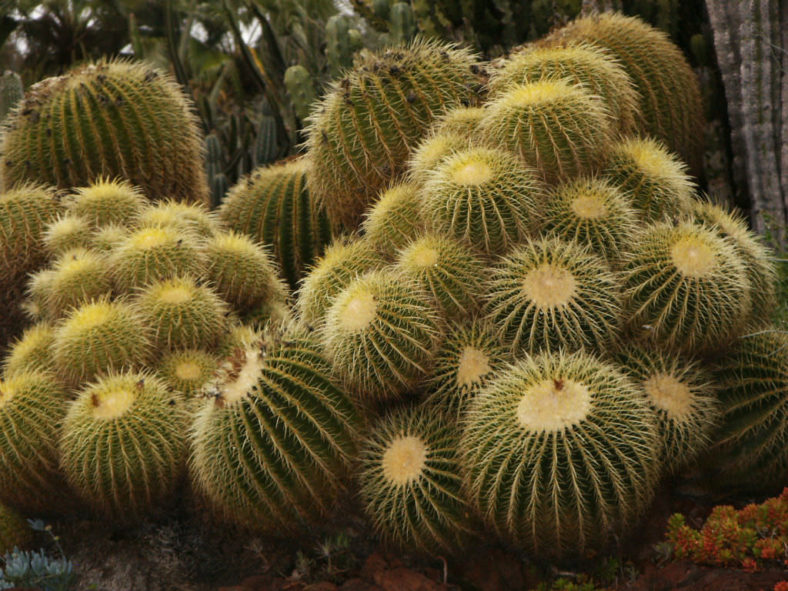Echinocactus is a genus that includes about six species of cacti commonly known as Barrel Cacti. They are native to Mexico and the southeastern United States. These are true desert plants that cannot handle humidity or standing water. The most common among these plants are almost perfectly round when young, making them excellent display plants. They are also highly attractive with their rows of spines of deeply ribbed lobes. Mature specimens bloom in summer with flowers that grow in whorls around the top of the plant.
It is not uncommon for them to stretch out as they grow, looking more like ovals than circles. Like most cacti, the secret to their successful indoor growth is nearly perfect drainage instead of letting them dry out.
Growing Conditions
Light: Full sun. Members of Echinocactus do best in a very sunny window. Plants that do not get enough sunlight will grow more slowly and fail to thrive.
Water: Water infrequently and ensure that the soil drains completely. Do not leave any water in the tray or allow them to sit in water. They are very prone to root rot.
Soil: A cactus soil mix is ideal. If you use a regular peat-based mix, add sand or extra perlite to enhance drainage and repot the plant when the soil breaks down.
Fertilizer: Feed with a weak liquid cactus fertilizer throughout the growing season.

Propagation
Echinocactus plants are typically propagated by seed. Sow the seeds shallowly in a cactus mix and keep them warm and slightly moist.
Repotting
It is best to repot at the beginning of the growing season or summer. To repot a cactus, ensure the soil is dry before repotting, then gently remove the pot. Knock away the old soil from the roots, removing any rotted or dead roots. Treat any cuts with a fungicide. Place the plant in its new pot and backfill it with potting soil, spreading the roots as you repot. Leave the plant dry for a week or so, then begin to water lightly to reduce the risk of root rot.
Grower's Tips
Overall, these are beautiful cacti for dish gardens or indoor displays. A collection of them is especially attractive, as they look like a collection of balls tossed upon the ground. However, it is critical never to let these cacti be exposed to prolonged periods in water or even very high humidity. They will suffer from rot in the presence of moisture. In addition, Echinocactus are vulnerable to pests, including aphids, mealy bugs, scale, and whitefly. Identify the infestation as early as possible and treat it with the leave toxic option.
Source: about.com
Links
- Back to genus Echinocactus
- Succupedia: Browse succulents by Scientific Name, Common Name, Genus, Family, USDA Hardiness Zone, Origin, or cacti by Genus